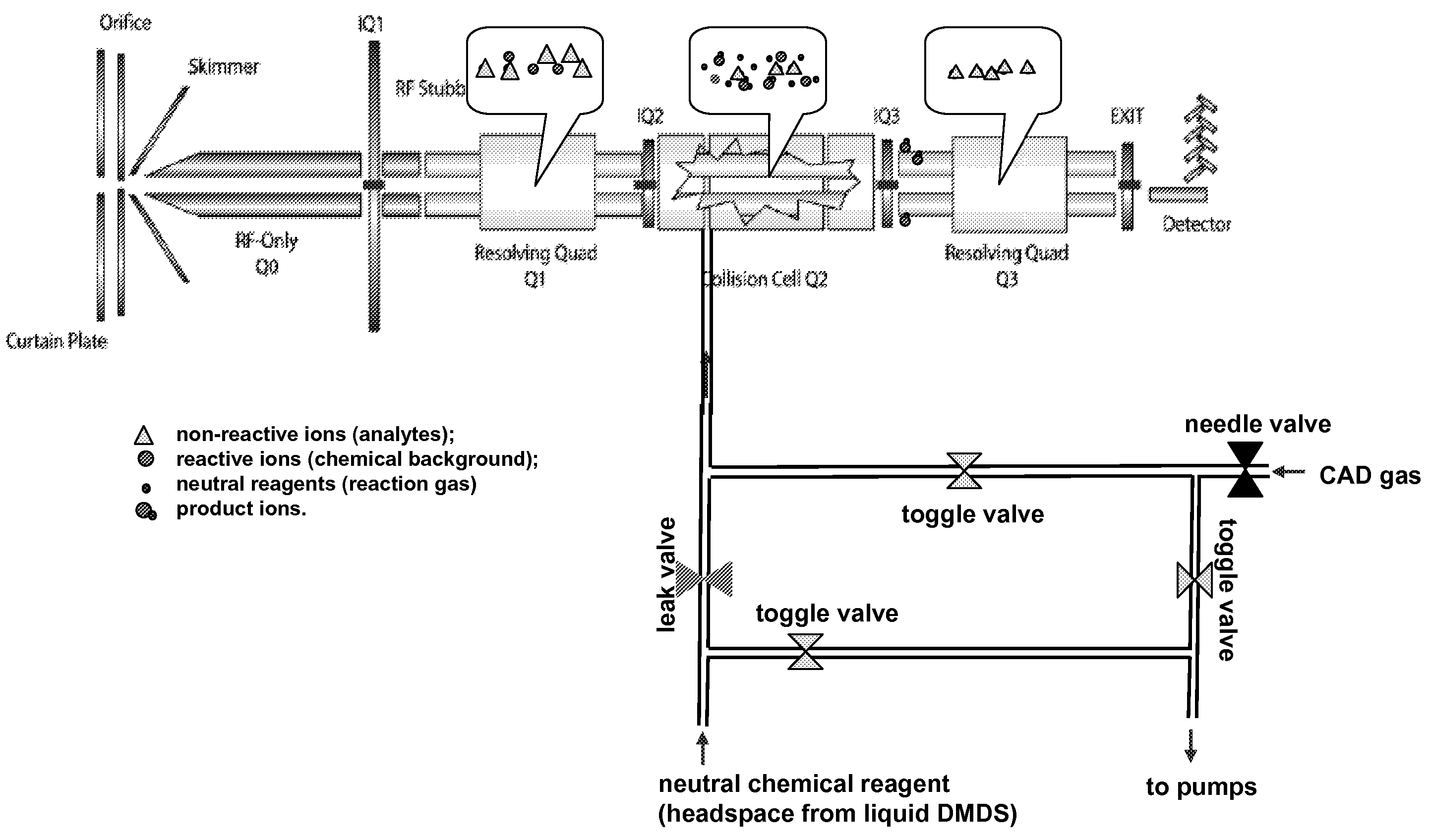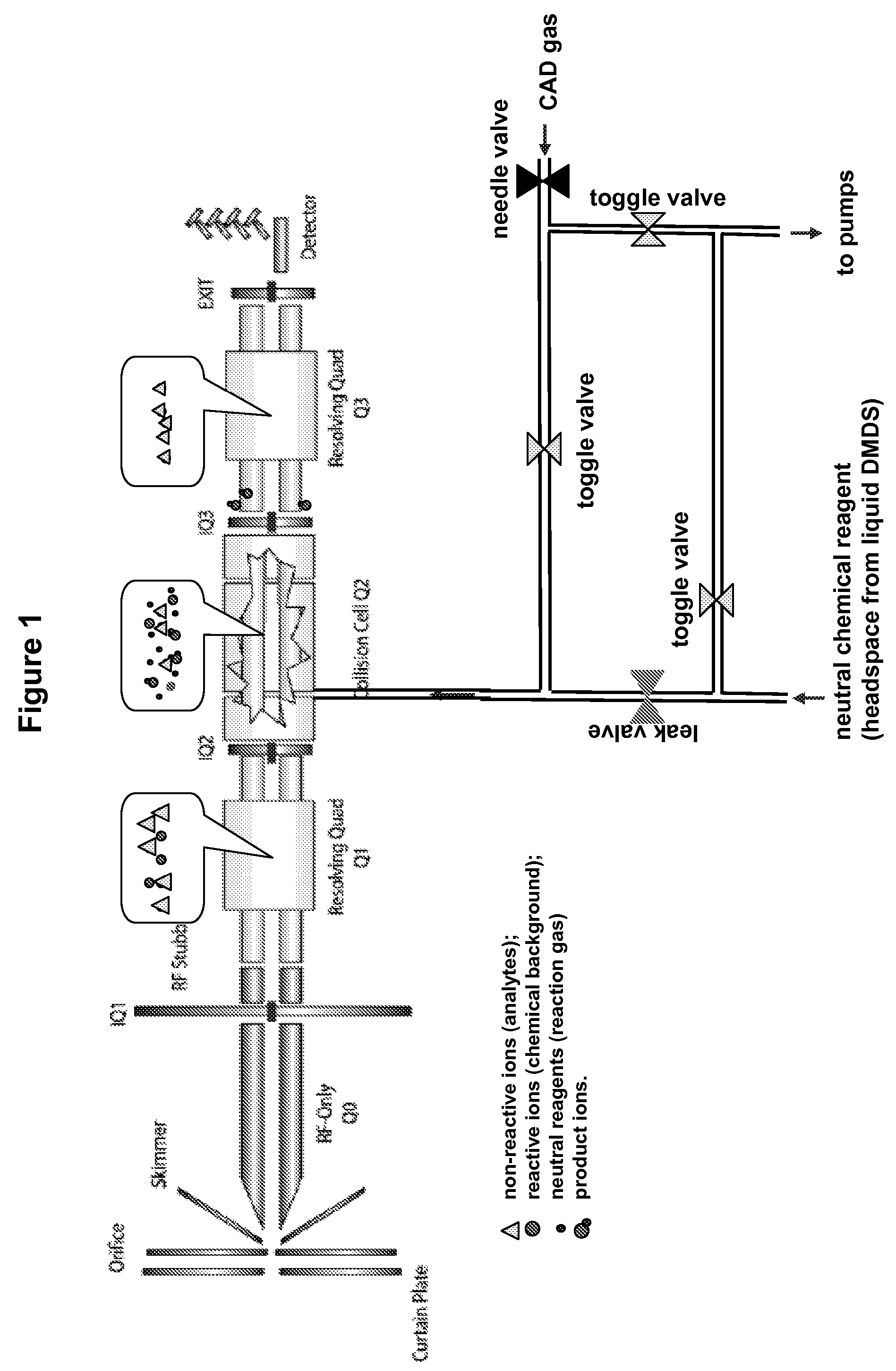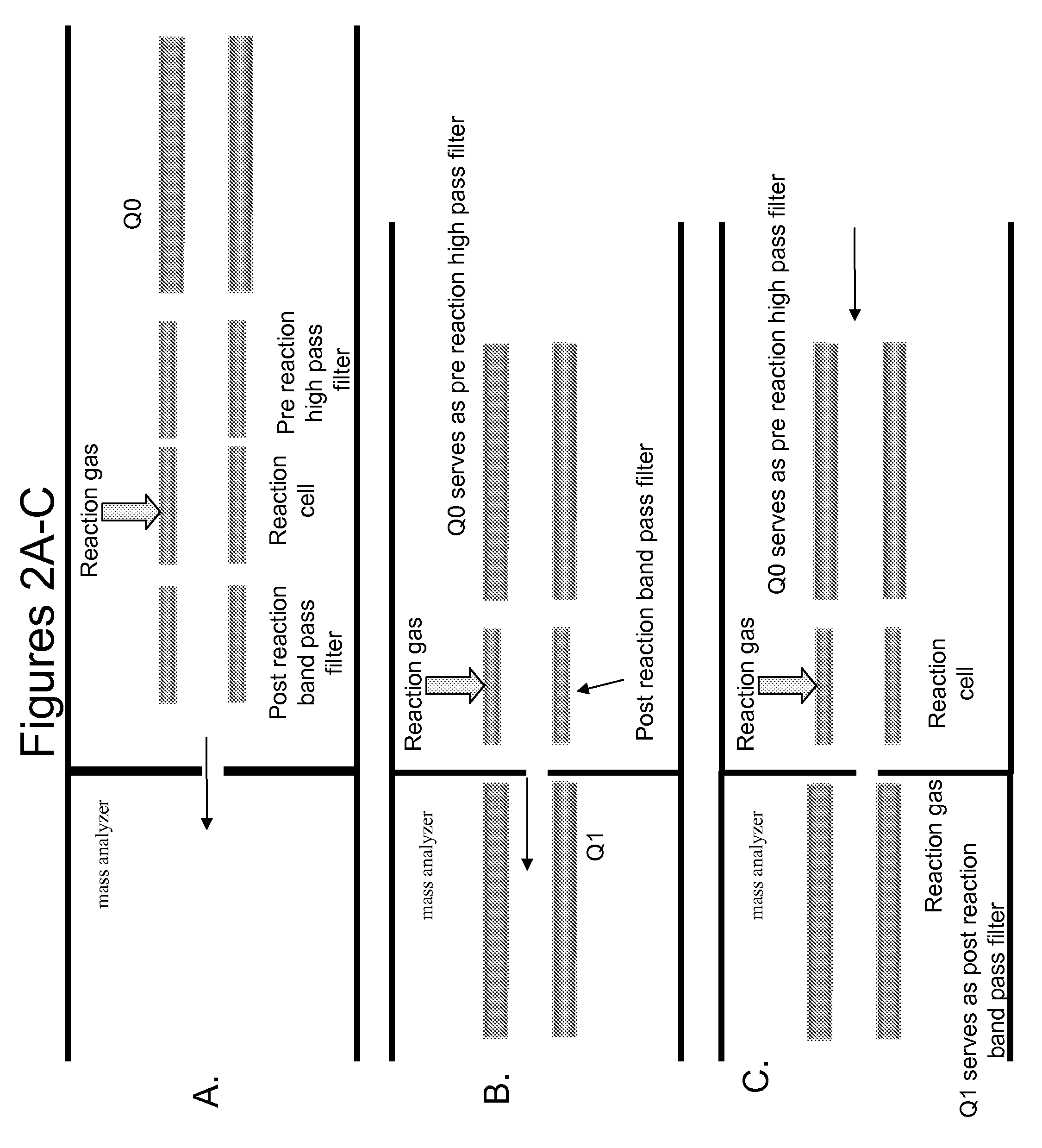Chemical noise reduction for mass spectrometry
a mass spectrometry and chemical noise technology, applied in the field of mass spectrometry chemical noise reduction, can solve the problems of loss of sensitivity, interference of background ions, and so on, and achieve the effect of reducing space charge effects and reducing chemical nois
- Summary
- Abstract
- Description
- Claims
- Application Information
AI Technical Summary
Benefits of technology
Problems solved by technology
Method used
Image
Examples
examples
[0060]Aspects of the present teachings may be further understood in light of the following examples, which are not exhaustive and which should not be construed as limiting the scope of the present teachings in any way.
[0061]All experiments were performed on either a commercial or a custom modified triple quadrupole mass spectrometers coupled with a HPLC system (atmospheric pressure ionization, positive mode). The system used in these examples was an API 365 instrument (MDS Sciex, Inc., Concord, Ontario, Canada), which is schematically depicted in FIG. 1. The collision gas inlet was modified to allow for introduction of vapor of a liquid neutral chemical reagent (e.g., reactive collision gas) into the collision cell. To perform the noise reduction experiments, the mass spectrometer was operated in the zero neutral loss (ZNL) scan mode, which can be used to filter out ions changing m / z values after ion / molecule reactions with the neutral chemical reagent. Various LC-MS conditions and ...
PUM
 Login to View More
Login to View More Abstract
Description
Claims
Application Information
 Login to View More
Login to View More - R&D
- Intellectual Property
- Life Sciences
- Materials
- Tech Scout
- Unparalleled Data Quality
- Higher Quality Content
- 60% Fewer Hallucinations
Browse by: Latest US Patents, China's latest patents, Technical Efficacy Thesaurus, Application Domain, Technology Topic, Popular Technical Reports.
© 2025 PatSnap. All rights reserved.Legal|Privacy policy|Modern Slavery Act Transparency Statement|Sitemap|About US| Contact US: help@patsnap.com



